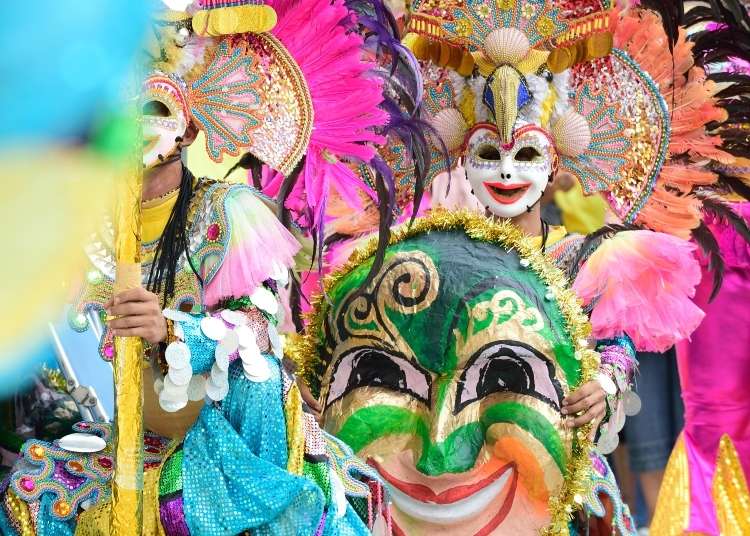
The Philippine Festival is Japan’s biggest Filipino event, held on December 3 and 4 at Tokyo’s Yoyogi Park Event Stage. The Philippines and Japan boast a friendship of over 60 years of diplomatic relations. Around 282,000 Filipino people live in various parts of Japan (according to 2020 statistics from the Ministry of Justice, Filipinos are the 4th largest group of foreign nationals residing in Japan).
Look forward to traditional dances, music performances by various guest artists, a lively and colorful parade, plus a fantastic variety of Filipino food! It’s an authentic display of the rich culture of the Philippines, so don’t miss out on this fun festival!
What is the Philippine Festival?
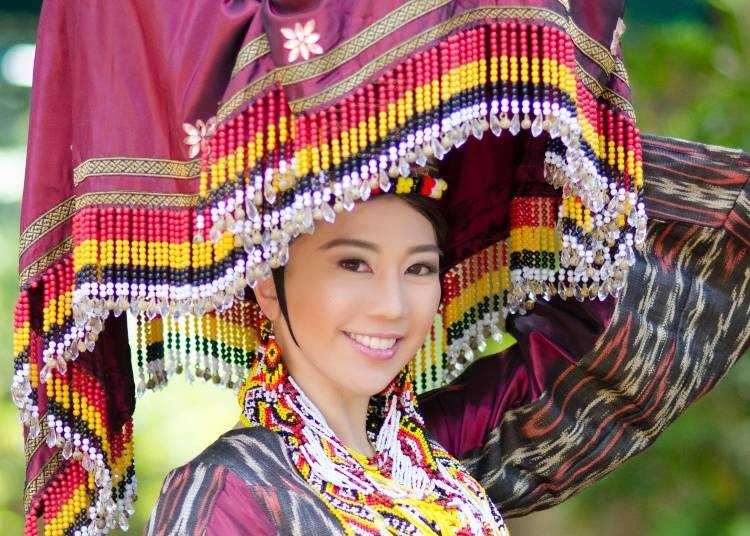
The Philippine Festival is a lively event that seeks to introduce the Filipino community both outside and inside of Japan to the locals and to promote the friendship between the two countries.
It was first held in 2006 under the name Barrio Fiesta until the name was changed to Philippine Festival in 2014. It also serves as a sort of alumni meeting for the Filipino community in Japan, with more than 150,000 visitors on the two festival days recorded in 2018.
Close to 500 people from Filipino organizations active in Japan and various Filipino volunteers also attended to give the festivities a proper boost.
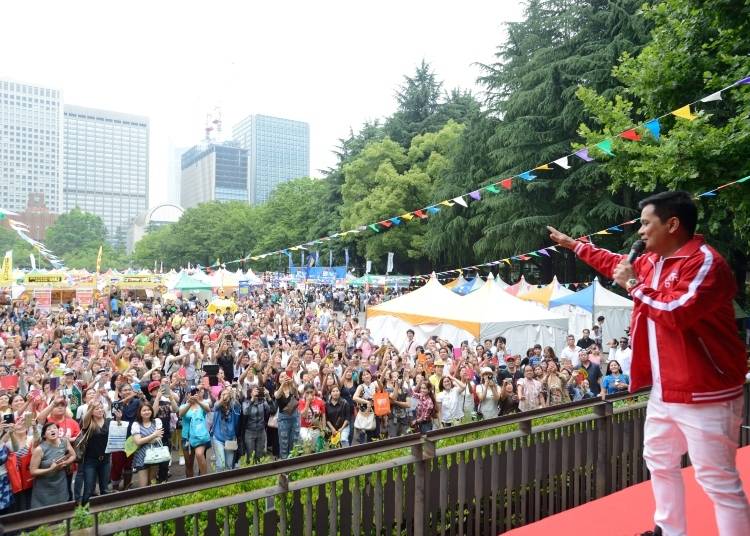

Filipino people also love to sing, and there is plenty of performances that one usually doesn’t get to see so easily. Famous Filipino artists such as Mark Mabasa and Kris Angelica will take the stage alongside Japanese bands that are popular in the Philippines. For details, check the festival’s Facebook page at the link below.
A Competition of Character and Beauty: Crowning the King and Queen of the Philippine Festival!
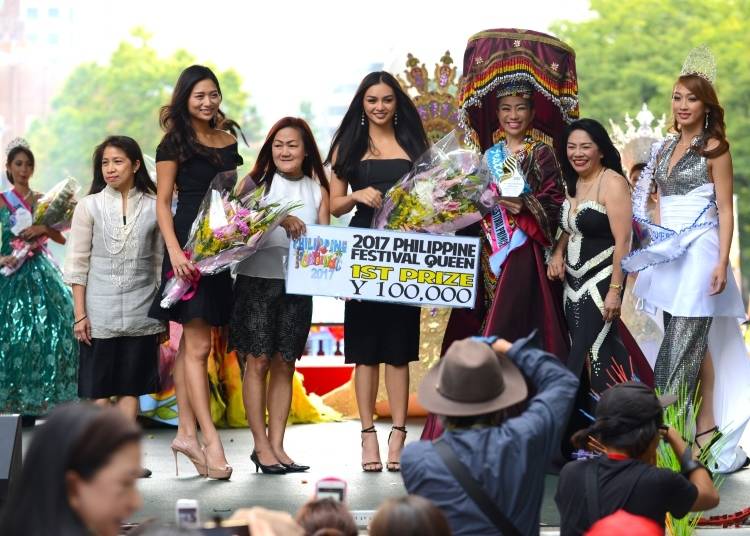
The Philippine Festival King & Queen Contest is another major event highlight. The King Contest started in 2016 alongside the well-established Queen Contest, and people are genuinely excited about it!
Especially impressive are the gorgeous traditional Filipino clothes worn by the contestants and the participants of the Grand Parade. Eight women and eight men, boasting Filipino roots, compete for the crown in front of three judges.
There’s a total of 100 points to be earned in the categories of appearance, manner and demeanor, and outfit, and the winners are crowned King and Queen.
The Stage Performances: Everyone can Join!

With prior application, you can join stage events even if you’re not a guest artist! Especially noteworthy is the karaoke contest. Singing is a favorite pastime of many Filipino people, and karaoke machines are a staple in homes all around the Philippines.
The dance contest is also a popular event. Hip-hop dance is trendy in the Philippines, to the point where the world noted the extremely high skill of the Filipino street dance team who won the World Hip Hop Dance Championship in 2014.
At the Philippine Festival, dancers can show off their own skills and compete against each other for victory while the crowd goes wild! There are also music band contests, traditional dance contests, and various other exciting events to keep you entertained.
Savor Local Food: 3 Must-Try Dishes from the Philippines!
Like in Japan, rice is a staple food in the Philippines, but the food culture is entirely different! Filipino cuisine uses plenty of fruits such as mangoes and bananas, while dishes often have a refreshing blend of sour, sweet, and salty while few things are spicy.
If you don’t know where to start exploring the Philippines’ cuisine, here are our three must-try dishes!
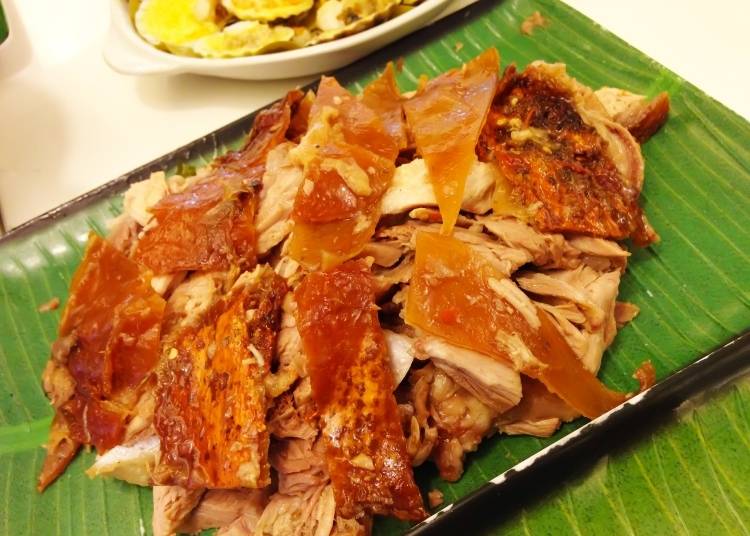
1. Lechon
One of the most representative dishes of Filipino cuisine is Lechon, a whole spit-roasted pig. There are numerous restaurants specializing in this delicacy in the Philippines, and you’ll often see a pig being spit-roasted in shop fronts.
The pig is grilled slowly and carefully, making for crispy skin and wonderfully juicy pork with a rich flavor. Lechon is an indispensable dish for occasions such as Christmas and New Year’s and is a favorite dish of many Filipino people. The authentic way of enjoying it is by coating it with a pork liver-based sauce.
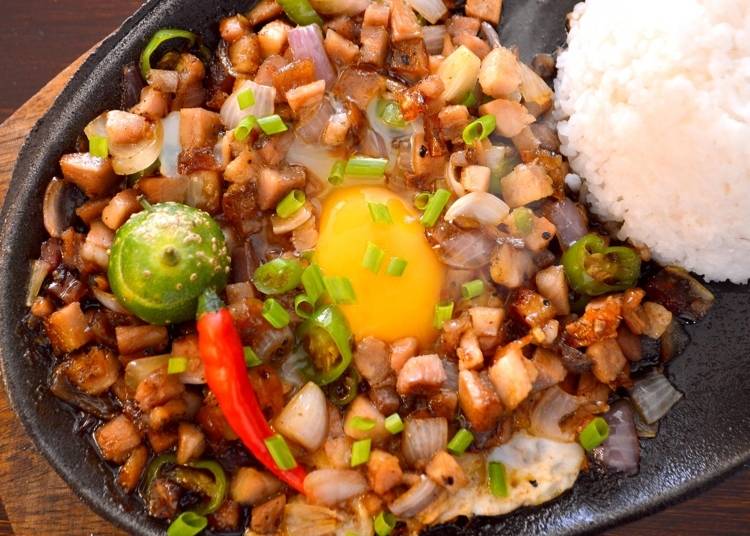
2. Sisig
Pig ears, pork cheek, pork skin, and offal make up this wonderfully hearty Filipino dish, finely chopped and mixed with onion before being topped with an egg.
The different parts of the pig create a unique texture and mouthfeel, enhanced by the spiciness of just a hint of red pepper – once you’ve tried this classic dish, you won’t be able to get enough of it.
Add an extra layer of flavor and try it with mayonnaise or lemon! The hearty flavor and the mellow egg are an outstandingly delicious match and will make you thirsty for a cold glass of beer.
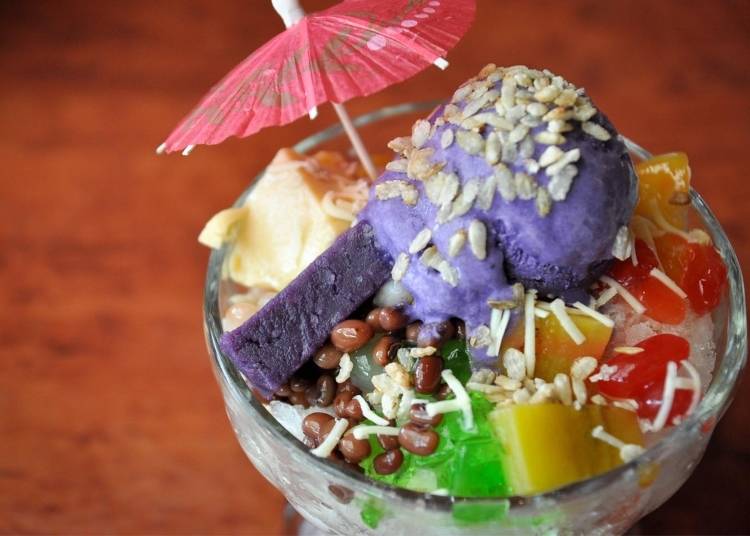
3. Halo-Halo
Ube (purple yam) ice cream, fruits, tapioca, nata de coco, pudding, shaved ice...there are many colorful ingredients in Halo-Halo, one of the Philippines’ most beloved and traditional sweets!
Its name means “being mixed” in Tagalog, and this delicious shaved ice dessert is sure to cool you down on a hot summer day.

Spit-roasting a whole pig at home or getting all the ingredients for Sisig is a proper struggle for the Filipino community living in Japan, so everyone is looking forward to Tokyo’s Philippine Festival every year! Be sure not to arrive too late, as the authentic dishes are highly sought-after by the Filipino locals and curious gourmets from around the world!
Enjoy the atmosphere and savor the spirit of the Philippines, right here in Tokyo!
Philippine Festival 2022: When & Where
Event period: December 3-4, 2022
Where: Yoyogi Park Event Stage
Admission: Free
Hours: 9:00 a.m. – 5:00 p.m.
Facebook Page: https://www.facebook.com/PHFestivalTokyo/
-

-
Address
2-3, Jinnan, Shibuya-ku, Tokyo, 150-0001
View Map -
Nearest Station
Harajuku Station (JR Yamanote Line)
-
Address
2-3, Jinnan, Shibuya-ku, Tokyo, 150-0001
- Area
- Category
*Prices and options mentioned are subject to change.
*Unless stated otherwise, all prices include tax.
Popular Tours & Activitiess
Recommended places for you
-

Ueno Zoo (Ueno Zoological Gardens)
Zoos, Aquariums & Botanical Gardens
Ueno
-

Tsukiji Outer Market
Old Towns (Shitamachi)
Tsukiji
-

Naritasan Shinshoji Temple
Temples
Narita
-

Tokyo Disney Sea®
Theme Parks
Chiba Suburbs
-

The Imperial Palace
Other Architecture
Tokyo Station
-

Kappabashi Street
Old Towns (Shitamachi)
Asakusa
-

Strawberries, Style, and Tokyo’s Coolest Neighborhood: Winter Afternoon Tea in Kichijoji
by: Guest Contributor
-
Ad

(Opening in Jan 2026) 'THE SUMO LIVE RESTAURANT HIRAKUZA GINZA TOKYO!' 5 Exciting Ways to Experience the World of Sumo!
-

The Best Japanese Food Representing 2025! 'Dish of the Year®' Annual Award Results Announced
-

How to Get Don Quijote's Exclusive 2025-2026 Winter Gift (+Tax-Free Savings)
-

New Seibu L00 Series Launching in 2026! What to See Along the Tokyo-Area Golden Route
by: Guest Contributor
-

Tokyo City Pass Upgrade: Harry Potter Studio Tour & Top Sights up to 85% Off
by: Guest Contributor
Inspiration for Accommodations
-

Enjoy Mt. Fuji from the Comfort of Your Room! Recommended Ryokan with Mt. Fuji View
-

Stay Near the Cherry Blossoms! Hotels for Cherry Blossom Viewing in Tokyo
-

Family-Friendly Hotels with Free Shuttle to Disneyland: Convenient Access for a Magical Stay
-

Top Ranked Hakone Hotels with Mt. Fuji View: Enjoy Stunning Scenery from Your Private Space
-

Convenient Tokyo Hotels with Airport Shuttle: Ideal for Families and Heavy Luggage
-

Stunning Tokyo Tower View Hotels: Enjoy Spectacular Scenery from Your Private Space
-

Convenient Asakusa Hotels with Kitchens: Ideal for Extended Family Visits
-

Experience Luxury: Hakone's 10 Best Five-Star Accommodations
-

Enjoy Mt. Fuji Autumn Leaves! Top Hotels Near the Popular Autumn Leaves Corridor
-

Experience Hakone Fall Foliage from Your Room with Stunning Views
-

Seven Rules You Should Know When You Go to Japan
-

Numazuko Kaisho in Ueno: Good Quality, All-You-Can-Eat Seafood for Just US$12!?
-

We have gathered some fashion items from Japan in Marunouchi!
-

Ueno Station Area Guide: Fun Ways to Explore Tokyo's Popular Destination (Area Map & Sightseeing Tips)
-

Ikebukuro Station Area Guide: Top 15 Spots When You Escape the Station's Maze!
-

Exploring Tokyo 'Urahara': 4 Ura-Harajuku Spots for Unique Fashion, Food and Creative Inspiration!
- #best ramen tokyo
- #what to buy in ameyoko
- #what to bring to japan
- #new years in tokyo
- #best izakaya shinjuku
- #things to do tokyo
- #japanese nail trends
- #what to do in odaiba
- #onsen tattoo friendly tokyo
- #daiso
- #best sushi ginza
- #japanese convenience store snacks
- #best yakiniku shibuya
- #japanese fashion culture
- #best japanese soft drinks













